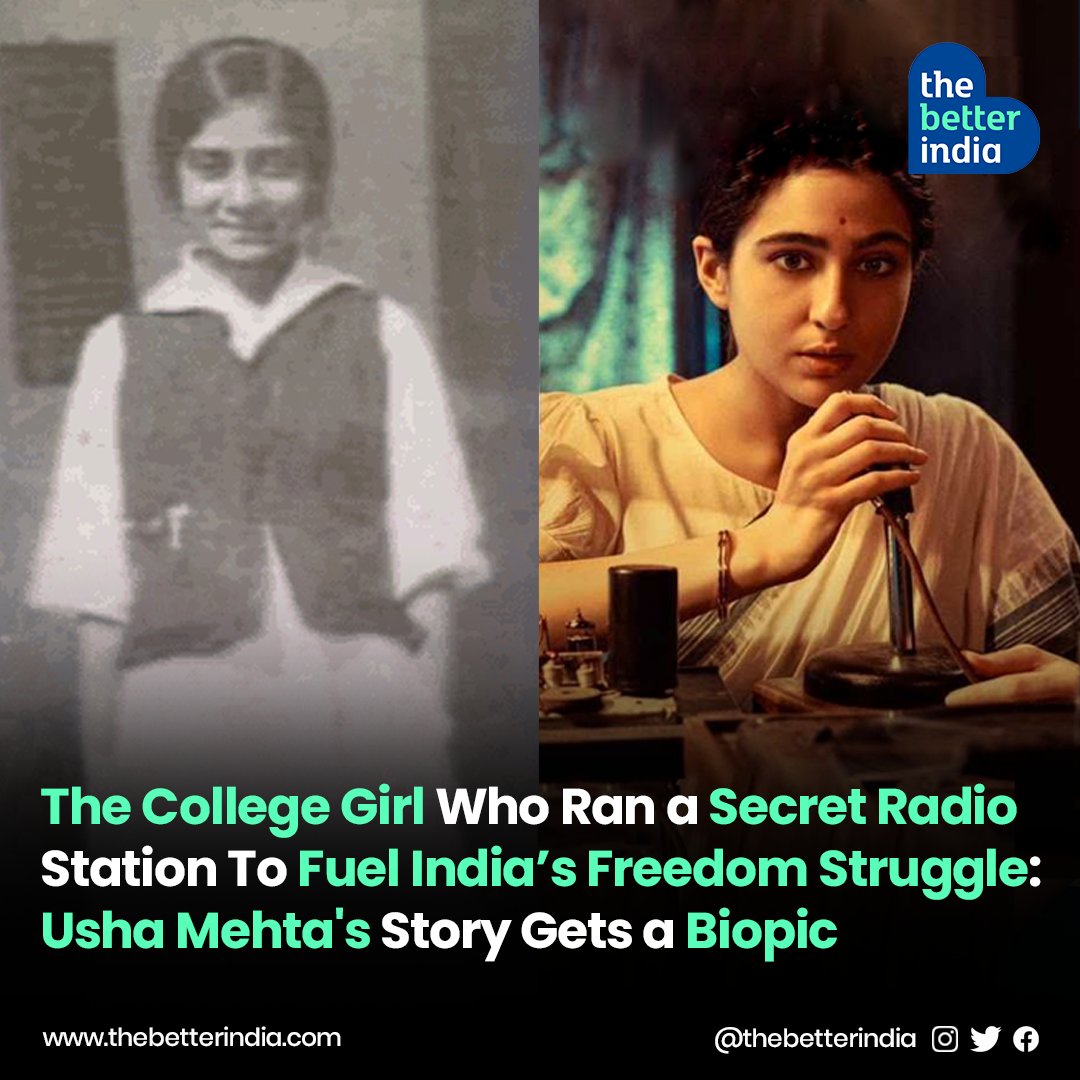
An upcoming biopic featuring #SaraAliKhan will tell the incredible story of unsung freedom fighter #UshaMehta.
@SaraAliKhan
#AeWatanMereWatan #FreedomFighter #Biopic #ForgottenHeroes #WomenInHistory #history
@SaraAliKhan
#AeWatanMereWatan #FreedomFighter #Biopic #ForgottenHeroes #WomenInHistory #history

Born on March 25, 1920, in Saras, Gujarat, Usha was just 22 when she helped establish the underground station Congress Radio, which amplified #MahatmaGandhi’s message of rebellion.
After the clarion call to #QuitIndiaMovement was blown on 9 August 1942, a young Usha told her father that her education would have to wait and left her home to contribute to the freedom movement.
For a fortnight, there was no knowledge of her whereabouts.
For a fortnight, there was no knowledge of her whereabouts.
It seemed that the British had succeeded in silencing the Quit India movement, with more than 100,000 protestors being arrested and the prominent leaders jailed or in hiding.
Amidst this gloom, the words “This is the Congress radio calling on [a wavelength of] 42.34 meters from somewhere in India,” uttered by Usha, echoed throughout the country and lifted up the spirits of revolutionaries across India fighting for the freedom of their country.
Read her full story here: thebetterindia.com/155663/usha-me…
• • •
Missing some Tweet in this thread? You can try to
force a refresh












